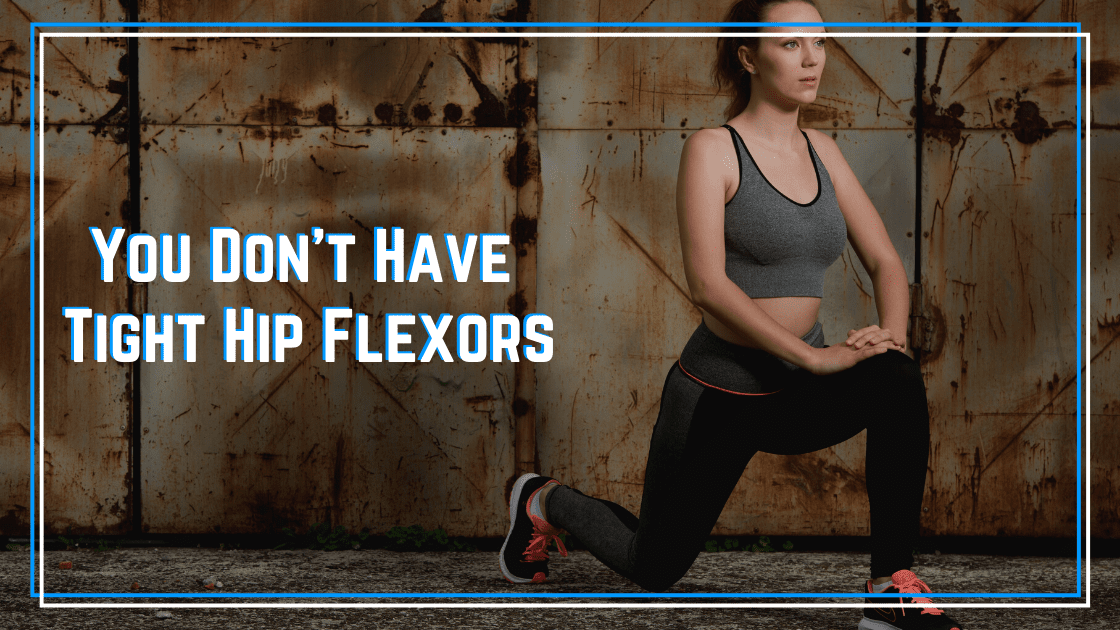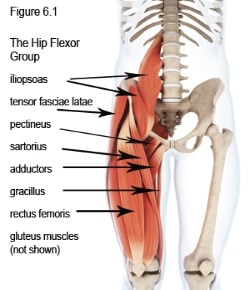Your Don’t Have Tight Hip Flexors
More than any other area in the body, athletes regularly tell me that they have tight hip flexors or pain in their hip flexors. Commonly this has been something they’ve self-diagnosed after watching a youtube video or reading a blog. Or maybe they’ve had a physical therapist, chiropractor, or massage therapist diagnose tight hip flexors as the source of their hip, back, or knee pain.
These athletes then spend weeks, months or years performing any exercise they can find to try and relieve this tightness. But often report that their hours of foam rolling and stretching haven’t changed their symptoms at all.
When these athletes finally reach out to me I’ll often assess their hip flexor mobility and to their amazement, the flexibility of this muscle group is great. They’ve unfortunately been lead to believe the tension they feel in this area is from the muscles being tight. But often this tension occurs when the hip flexors are WEAK and getting overworked.
The truth is, we can’t diagnose tight hip flexors unless we actually measure their flexibility. And far too often, anytime an athlete reports tension on the front of the hip or a manual therapist feels tension, they diagnose the athlete with tight hip flexors.
I can’t overstate how often this occurs, resulting in athletes not making progress on managing their symptoms.
Don’t get me wrong…there are plenty of people out there with truly tight hip flexors. But there are also lots of people who think they have tight hip flexors when they have weak hip flexors manifesting themselves as a muscle with increased TONE.
ANATOMY
Let’s dissect these ideas a bit more. But first, reviewing the anatomy of the hip flexor muscles will help us out.
The iliopsoas (most commonly “tight” of the hip flexor muscles) is composed of two muscles, the psoas and iliacus that share a common to insert onto the hip.
The psoas originates on the vertebral bodies of the lumbar spine and the iliacus originates on the iliac fossa.
The tensor fasciae latae (TFL) originates or the ASIS of the iliac crest and inserts onto the IT band.
The rectus femoris (one of the four quad muscles) also inserts onto the pelvis, making it a hip flexor.
While each hip flexor muscle functions slightly differently, their overall combination allows them to flex the hip joint, anteriorly rotate the pelvis, and extend the lumbar spine. Due to its’ attachment on the vertebral bodies of the lumbar spine, the psoas also plays an important role in lumbar spine stabilization (1), an often forgotten function of this muscle.
Testing Your Hip Flexor Mobility
As mentioned above, we can’t poke a muscle or diagnose a muscle as tight just because an athlete feels tension in an area. To diagnose tight hip flexors we must measure their flexibility. For this we will use the Thomas test which can be quicly performed by any athlete, coach, or clinician.
To perform the Thomas test, we have the athlete sitting on the edge of a box or treatment table. Next, they’ll lay back which holding their knees towards their chest. A partner or clinician will then hold and lower one of the two legs down.
The partner should look for three things:
- Does the thigh reach full extension (the thigh parallel to the ground).
- Is the knee able to bend to 90 degrees of flexion without the thigh raising? If the knee does not make it to 90 degrees without the rising, tightness of the rectus femoris is to blame. If the knee can flex to 90 degrees without the thigh rising, but the thigh is unable to reach full extension, illiopsoas tightness is present.
- Does the thigh migrate laterally? If so, TFL tightness is present.
.
Without the performance of muscle flexibility testing, we cannot diagnose someone with having tightened hip flexor musculature.
What should you do if you pass this test but have anterior hip pain OR have been told that you have tight hip flexors?
We have ruled OUT flexibility issues which usually means that you are dealing with increased tone in the muscles. This often occurs when the hip flexors and/or core is weak and continually overworked. In treating these individuals, I want to decrease the tone of these muscles and then follow that up with specific exercises that help them develop better hip flexor strength. This will usually provide significantly better outcomes compared to the stretches you’ve been spinning your wheels performing.
Hip Flexor Release
I dislike the painful grind and mash technique with a kettlebell that many athletes use. I prefer a gentler technique such as that suggested by TheManualTherapist.com. Remember we are decreasing TONE not increasing muscle tissue length so crazy pain is not needed.
Hip Flexor Exercises
While follow up hip flexor exercises are always individual to the athlete I’m working with, the following are two of my favorites.
First, I like this using different hip thrust variations that makes the athlete work very hard to reach full hip extension. With athletes I’m addressing hip flexor tension with, I usually prefer having them pause at full hip extension for 1-3 seconds on every rep to ensure they fully open the hip up.
Second, I love supine marching to activate the psoas during a core stabilization exercise. The athlete must maintain a neutral lumbar spine (cue them to keep their spine flat on the ground) while moving the lower body. Often times, I must regress to more basic exercises before this if the athlete cannot find and maintain a neutral spine.
GHD Eccentrics are an excellent way to work the strength and mobility of the psoas muscle. Use a resistance band to help return upright after slowly lowering yourself down.
Finally, dead bugs off a bench are a great combination of core strength and psoas flexibility. Slowly lower your leg down without letting your back position change.
This combination of release and hip flexor activation exercises often does wonders for abolishing the symptoms of “tight hip flexors”. And it does so in a fraction of the time compared to the months of stretching athletes have previously performed.
Remember, with any exercise or mobility prescription, it is important to assess if the mobility work you are doing is truly the cause of your dysfunctions. Too often, we blindly follow the advice of online gurus and clinicians who fail to take the time to actually assess.
If you want a done-for-you program to address your hips, check out our 4-week Hip Flexor Overhaul program:









